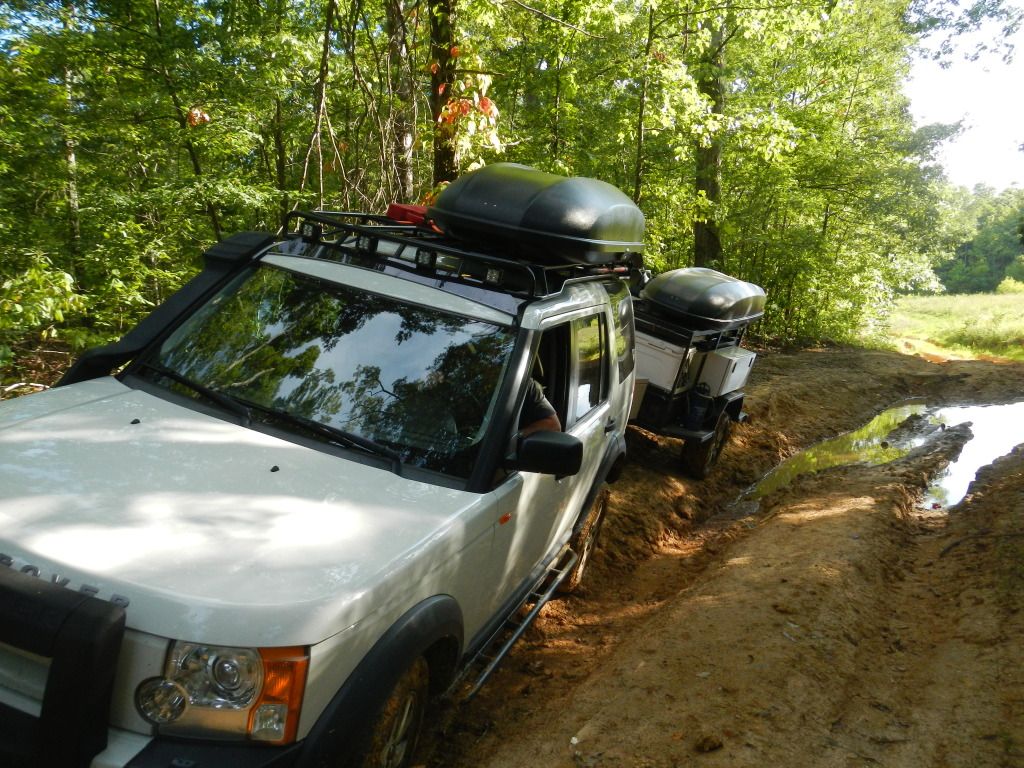Do you have any photos of that, I'd like to see how they're mounted? Which rigs do you do that with?
My personal preference is to fit a long range tank if possible. If not possible, I store the fuel in NATO Jerry cans and lash them (tight) inside the vehicle. This gets the weight low and far forward.
In a typical wagon like a Discovery, LR3/LR4, etc. with two passengers, I can't imagine needing a roof load or having to pull a trailer. We did the Silk Road for two months in a Suzuki Jimny and could still see out the back window (two occupants).

Driving in developing countries is pretty nutty, especially in places like Uzbekistan and Tajikistan, etc. I wanted the best possible handling and responsiveness from the already squirrely Jimny.
Here is an example of a typical adventure load in my 1995 Discovery, which is a significantly smaller truck than the LR4. This is two people across the Altar Desert in Mexico, fully self-supported and an additional 20 gallons of fuel.
The black Pelican Case is the med kit. The tan is the full extent of my cooking kit.
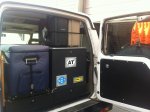
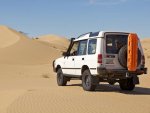
I used no rack on the Discovery for the dune crossing to maximize performance. Every traveler/driver is different. I am willing to give up all kinds of convenience and comfort to ensure the truck handles/performs optimally. Some may have other goals or have several children in the back. This is just my personal mantra and best practice. YMMV.
Here is the rough configuration of the NATO cans on the rear floor of the Discovery. I used a thin, but durable rubber mat to protect the interior from damage and rubbing paint. I placed a thin plastic sleeve between each can for the same purpose and to limit rattle. They had not been completely lashed yet, which required another set of straps. I used two of the new style cans to determine sealing performance. Of course the old ones worked better and didn't leak a drop. Always fill ahead of time if possible and at a higher elevation. This really helps with off-gassing. Overall, I had no noticeable fuel smell in the truck.
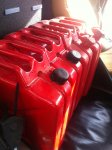
For the LR4, the configuration is similar, but this truck has SO MUCH MORE ROOM. It is not quite as voluminous as the Land Cruiser 78s, but close. I can remove one of the forward boxes and mount four fuel cans, while still sleeping inside. I can also install the second swing out on the Kaymar and fit three cans.
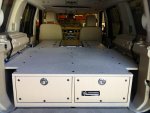
Personally, I don't like roof loads and use them only when all other options are exhausted, namely bringing less crap. . .
For another example, here are fuel cans mounted in the back of Tom Sheppard's G-Wagon. He utilized a bunch of wood cribbing and straps to secure the load. Again, far forward and down as low as possible is optimal. An aux. fuel tank can be even more preferable depending on the scenario (as it is at the frame level and does not utilize interior volume), but I like the ability to remove as much of the vehicle load as possible should we encounter a particularly nasty dune crossing, mud bog, etc. With Pelican cases and cans, you can remove hundreds of pounds in a few minutes.






.jpg)
